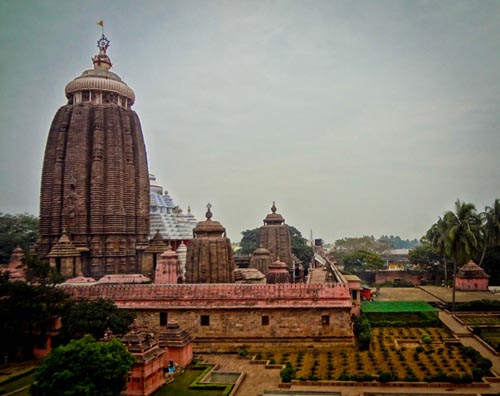Jagannath Temple

Information of Jagannath Temple, Puri, Odisha
Jagannath Temple is located in Puri in the Indian state of Orissa. It is a Hindu temple dedicated to Jagannath meaning the Lord of the universe. A pilgrim who visits the temple is usually the devotees of Lord Vishnu and Lord Krishna and forms an important pilgrimage for Hindus. This temple was built in the 12th century and the wooden idol is replaced in every twelve years instructed by Lord Brahma himself. This temple is associated with the Vaishnava sect of the Hindus.
Jagannath Temple Religious Significance
The Jagannath temple draws a very large number of pilgrims every day. The temple opened at 5 am in the morning and continues till midnight. People can have darshan free of cost in a queue or pay an amount of 25 rupees and directly enter the main shrine. The entry of non Hindu people is strictly prohibited. The temple remains open throughout the year.
The most important festival is the Rath Yatra or the chariot festival which is held in the month of June every year. It is a procession in which lord Jagannath is carried in a chariot as s sign of homecoming. A large number of pilgrims are present to witness the scared ceremony.
Jagannath Temple Mythology & History
The Jagannath temple was invaded eighteen times. The presiding structure was built in 1161 by King Anantavarman Chodaganga Dev, of the Eastern Ganga Dynasty.
According to the legends in Sata Yuga, King Indrayumna constructed a temple undertaking the order of Lord Brahma himself. When he completed the temple and invited Brahma he was in deep meditation for nine yugas (era) and so the visit was not possible. Subsequently the temple got buried. The temple was excavated by the King of Uthkala Dynasty. King Indrayumna being the true owner of the temple he was ordered yet again by Lord Brahma to install deities in the temple. He then had a dream that Lord Vishnu would be floating on water in the form of a log. He found as instructed and sought to carve out idols of Lord Jagannath, his brother Balabhadra and their sister Subhadra. The lord himself manifested as the carpenter to make idols on the condition that he was to be undisturbed until he finished the work. After two week they were curious because he made no sound so the King went to check. He was there doing his work but he abandoned the idols unfinished. In spite of this King Indrayumna heard a divine voice which instructed him to install the idols. The holy temple holds immense religious importance and thus it is visited by huge number of devotees, where they come and offer their prayers and seek blessings.
Jagannath Temple Architectural Significance
The temple is a huge complex occupying 37,000 square meters. The Jagannath temple is the highest temple in Orissa measuring 65 meters high. The temple is built in ancient Oriya style and comprises of Ashoka architecture here and there. The temple complex is surrounded by 6.1 meters high walls, named as Meghanda Pacheri. There is a wall surrounding the main shrine called the kurma bedha. The main temple has four parts, the sanctum sanctorum, the frontal porch, the audience hall and the offerings halls. The sanctum sanctorum comprises of an idol of Lord Jagannath carved out of wood and is placed on a pearl throne.
The main shrine structure rises up in a pyramidal shape. It has a Nilachakra, a discus with eight spokes and made up of alloy of eight metals and is 3.5 meters high. There are four entrances in the temple complex each guarded by an animal sculpture and are also named under the animals. They are the lion gate, elephant gate, tiger gate and horse gate each facing to four different directions. There are about 120 minor shrines in the temple complex. The most important temple is the Vimala temple which is considered to be one of the Shakti peethas where Goddess Parvatis feet fell. There are a number of pillared halls which are utilised for meetings. Thus the temple is well organised and the architecture is well planned, making it convenient for pilgrims to offer prayers. The temple is very popular and is one of the most revered temples of Orissa.
- Andhra Pradesh Temples
- Assam Temples
- Bihar Temples
- New Delhi Temples
- Goa Temples
- Gujarat Temples
- Jammu and Kashmir Temples
- Karnataka Temples
- Kerala Temples
- Madhya Pradesh Temples
- Maharashtra Temples
- Odisha Temples
- Punjab Temples
- Rajasthan Temples
- Sikkim Temples
- Tamil Nadu Temples
- Telangana Temples
- Uttar Pradesh Temples
- Uttarakhand Temples
- West Bengal Temples